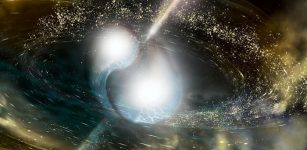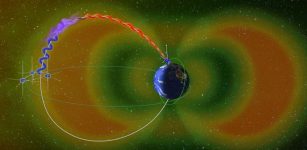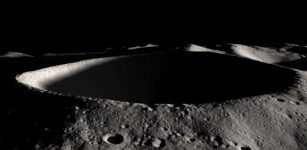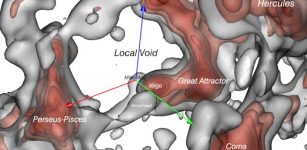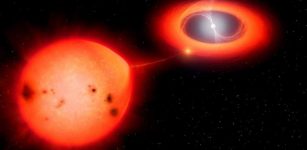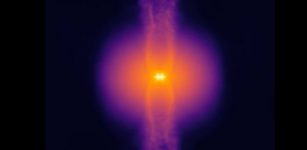Hygiea: Fourth-Largest Object In Asteroid Belt Is The Smallest Dwarf Planet
Eddie Gonzales Jr. – MessageToEagle.com – Using ESO’s SPHERE instrument at the Very Large Telescope (VLT), astronomers have discovered that the asteroid Hygiea could be classified as a dwarf planet.
The object – Hygiea – is the fourth largest in the asteroid belt after Ceres, Vesta, and Pallas. The object is spherical, potentially taking the crown from Ceres as the smallest dwarf planet in the Solar System.
 Hygiea lacks the very large impact crater that scientists expected to see on its surface. Hygiea is the main member of one of the largest asteroid families, with close to 7000 members that all originated from the same parent body. Credit: ESO/P. Vernazza et al./MISTRAL algorithm (ONERA/CNRS)
Hygiea lacks the very large impact crater that scientists expected to see on its surface. Hygiea is the main member of one of the largest asteroid families, with close to 7000 members that all originated from the same parent body. Credit: ESO/P. Vernazza et al./MISTRAL algorithm (ONERA/CNRS)
As an object in the main asteroid belt, Hygiea satisfies right away three of the four requirements to be classified as a dwarf planet: it orbits around the Sun, it is not a moon and, unlike a planet, and additionally, it has enough mass for its own gravity to pull it into a roughly spherical shape.
“Thanks to the unique capability of the SPHERE instrument on the VLT, which is one of the most powerful imaging systems in the world, we could resolve Hygiea’s shape, which turns out to be nearly spherical,” lead researcher Pierre Vernazza from the Laboratoire d’Astrophysique de Marseille in France, said in a press release.
“Thanks to these images, Hygiea may be reclassified as a dwarf planet, so far the smallest in the Solar System.”
The team also used the SPHERE observations to constrain Hygiea’s size, putting its diameter at just over 430 km. Pluto, the most famous of dwarf planets, has a diameter close to 2400 km, while Ceres is close to 950 km in size.
The astronomers also observed that Hygiea lacks the very large impact crater that scientists expected to see on its surface. Hygiea is the main member of one of the largest asteroid families, with close to 7000 members that all originated from the same parent body.
“This result came as a real surprise as we were expecting the presence of a large impact basin, as is the case on Vesta,” says Vernazza. Although the astronomers observed Hygiea’s surface with a 95% coverage, they could only identify two unambiguous craters.
“Neither of these two craters could have been caused by the impact that originated the Hygiea family of asteroids whose volume is comparable to that of a 100 km-sized object. They are too small,” explains study co-author Miroslav Bro� of the Astronomical Institute of Charles University in Prague, Czech Republic.
Simulations showed that that Hygiea’s spherical shape and a large family of asteroids are likely the results of a major head-on collision with a large projectile of diameter between 75 and 150 km.
This violent impact thought to have occurred about 2 billion years ago, completely shattered the parent body. Once the left-over pieces reassembled, they gave Hygiea its round shape and thousands of companion asteroids.
“Such a collision between two large bodies in the asteroid belt is unique in the last 3-4 billion years,” says Pavel Ševeček, a Ph.D. student at the Astronomical Institute of Charles University who also participated in the study.
Written by Eddie Gonzales Jr. – MessageToEagle.com Staff


